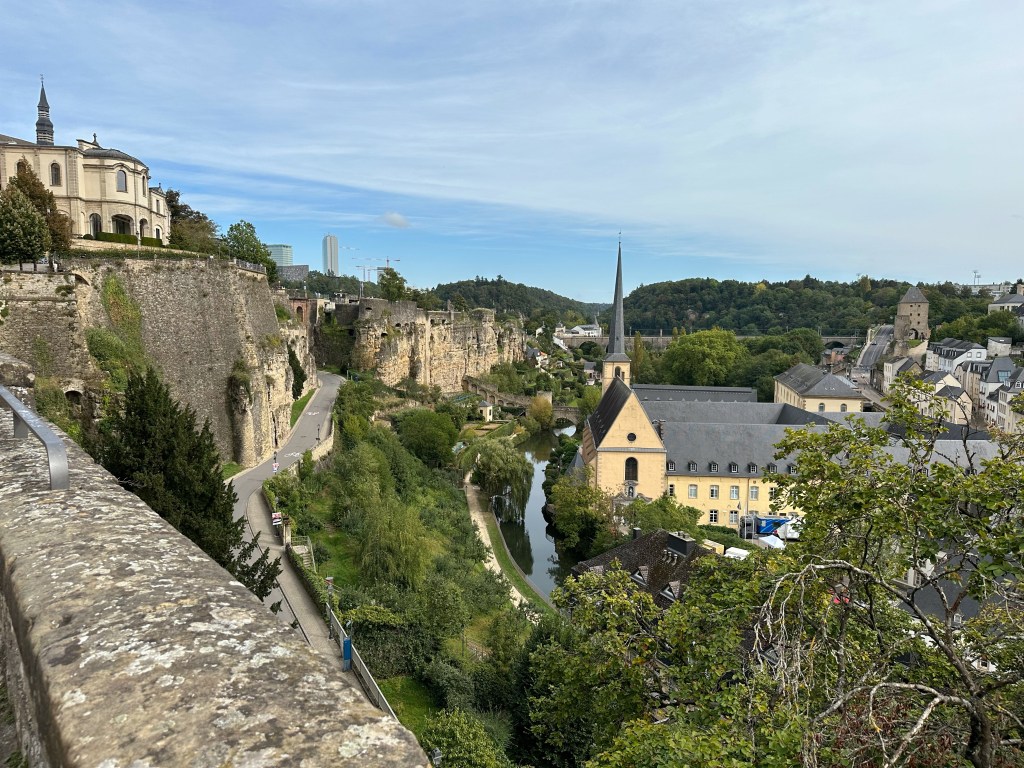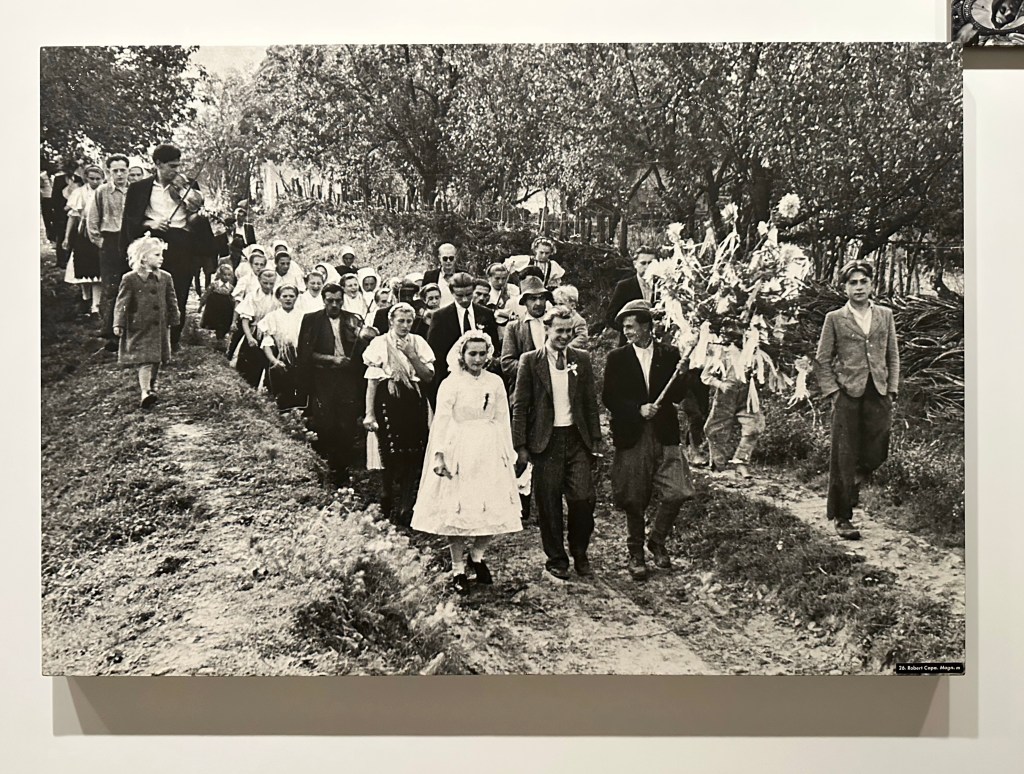
In January of 1955, Edward Steichen—a photographer and then Photography Director of the Museum of Modern Art (MoMA)—opened a photo exhibit entitled The Family of Man.
In those years following World War II, the impetus was to portray the universality of the human condition—to make the point that we are all, in fact, of one family.
Millions of photographs were submitted for consideration. Ultimately, Steichen selected 503 of them taken by 273 photographers from 68 countries. From January until May of 1955, they were exhibited in MoMA. Afterward, the photographs toured the world for eight years and attracted an audience of more than nine million people.
In 1964, the exhibit was offered to the Grand Duchy of Luxembourg—Streichen’s birth country. Since 1994, they have been permanently displayed at the castle in Clervaux, Luxembourg—a village in the proverbial middle of nowhere.
Nearly ten years ago, Pat mentioned that he’d love to see The Family of Man. I told him that I’d put it on the list. Over the years, now and again the idea would resurface. Two years ago, I started to plan. And replan.
Clervaux is not exactly on the beaten path. The hotel choices are meager. The train options are unclear. I booked and cancelled the trip twice—each time concerned that I didn’t have the plans exactly right.
Then two weeks ago, I decided it was time. I found a last-minute hotel deal in Luxembourg City, yet I was still unclear exactly how we’d get to Clervaux since, inexplicably, I won’t rent a car in Europe and, inexplicably, I couldn’t find consistent train routes.
As we boarded the TGV in Paris, I forewarned Pat, “Remember, we may not make it to Clervaux.”
He replied, “But I’m sure we’ll find something fun to do.”
Pat, it turns out, is a natural for this life.
Me, not so much. I handle disruption by screaming at the travel Gods (and occasionally at Pat) while rifling through my Rolodex of contingency plans.
This somewhat explains our marital divisions of labor. He cleans and does the laundry while I cook and handle logistics. But for whatever reason, this seemingly simple trip had me stumped. I had a rough idea of a plan—and no backup.
The challenge with the Luxembourg train system, I eventually figured out, is that it’s free. Hence, with no tickets to sell, most aggregator sites, like Omio, simply return a message no route found. Even the information on Luxembourg’s official train site is spotty. Which is fair, I suppose. Because tickets don’t exist, and all travel is free.
Fortunately, I’m old enough to remember how travel planning used to work, so I asked the hotel concierge—aka a real person. And alas, he told us exactly what to do.
The next morning, as we pulled out of the Luxembourg station bound for Clervaux, I told Pat, “Nothing’s gonna stop us now.”
Twenty minutes later, feeling like a couple of thrill-seeking roustabouts, we got off the train at Ettelbruck to zip through the General Patton Museum.
You see, in my trip planning prep, I had realized that we’d be going through the Battle of the Bulge territory. I had spent last winter, during the cusp of our first cancelled Clervaux trip, reading books about the end of World War Two.
It was riveting stuff. A desperate Hitler routed back to Germany by Allied troops sweeping across France. One frantic and final attempt to reconquer lost lands. A fiercely deadly battle fought during one of the worst winters in recent history. As the train chugged into Ettelbruck, I relived it all for Pat. He doesn’t always love it when I do this, but that never dissuades me.
An hour later, with my Patton knowledge spit-shined, we were on the next train and—once again—headed to Clervaux.
It was a beautiful day for the 20-minute walk from the station to town. We stopped for lunch and then made our way to the castle, elbowing through hoards of gathered Steichen fans.
Actually, that’s untrue. We walked the pathway up to the castle completely alone. As Pat ran ahead, I yelled, “Wait! I need to take your picture.”

At the desk, the ticket vendor told me that they get around a hundred visitors a day on average. He seemed surprised that a couple of Americans had stumbled into the exhibit. Then he mentioned in passing that he had no idea why it was in Clervaux since Steichen wasn’t born there.
I noodled that question as we walked through the castle, absorbing the magnitude of it all. And I came up with a theory.
World War II was a motivating factor for Steichen’s work. What better place for The Family of Man than here, at the center of the final days of that war? What better place to remind us of our fundamental and global connectedness then in a place where the family of man had been so brutally torn asunder?

The exhibit was breathtaking—images from the most famous photographers of that era: Capa, Cartier-Bresson, Lange, Erwitt, Doisneau, Ronis, and the list goes on. We spent the afternoon ensconced in it all. I told Pat to take all the time he needed. The trains, I now knew, left every hour.

On our way back to Luxembourg, awash in the glow of a travel day gone well, I said to Pat, “I think we need to take more risks. After all, what’s the worst thing that could have happened today? Luxembourg is a country that’s roughly 20 miles by 50 miles. Bottom line, we could have walked here.”
He’s used to my never-gonna-happen pipe dreams of complete unplannedness, but now wasn’t the time to point out that I’ll never change. Instead, he turned to me and smiled, “Thanks for getting me here.”


Categories: Life in Paris, Western Europe
This line made me laugh out loud and is also true for my husband and me.
“He doesn’t always love it when I do this, but that never dissuades me.”
I was somewhat surprised that that line made it through censorship. 😬
I’m pleased to see that you are keeping going with your blog. Our lives and priorities may change over the years, but with your skill for writing and picking out the ‘nuggets’ to share, it’s great to see that you are continuing to post from time to time.
This exhibition looks well worth a visit. Thanks for posting!
Thanks Jenny. That’s so kind. … but stay tuned for next week. 😬
I do love (!!) reading about all your adventures. Thank you for sharing.
And I love your comments, Pam!!